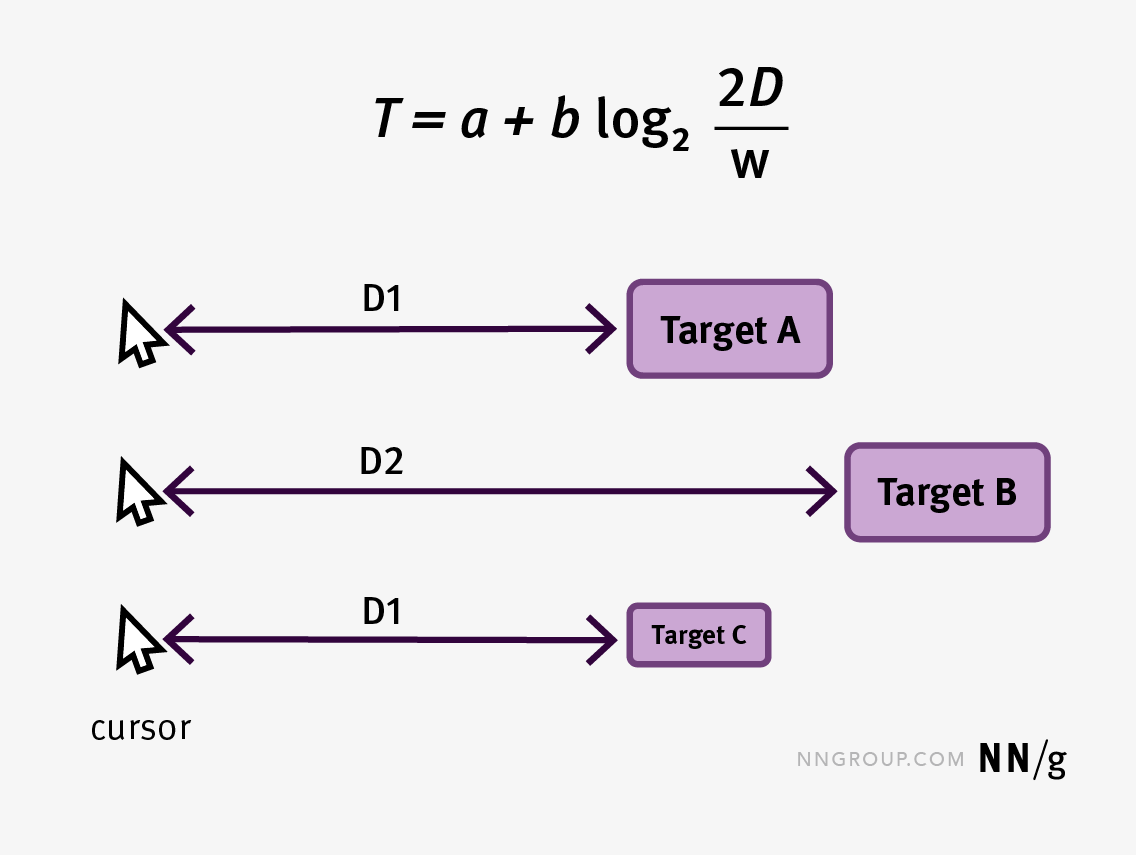Hey,
So, we all know, product management and decision making go hand in hand. If you can make excellent decisions, you are a great product manager. However, it’s not that simple. A lot of complexity and always a crunch of time. Help yourself though frameworks, read part 1 and part 2 of decision making by marc.
Every week, I summarise the best reads from 100+ articles with the sole purpose of helping you become better at product with minimal effort. Subscribe!!
Fitts’s Law and Its Applications in UX
The movement time to a target depends on the size of the target and the distance to the target.
Key Takeaways:
Not only does a text label reduce icon ambiguity, but it also improves movement time to that target
In real-world interface design, we do not have infinite targets. Screen edges are a replacement for easy reach, as long as the interaction is mouse-driven. E.g. start in windows.
If you know that a set of controls will be clicked in a certain order, place them close to each other to minimise the distance between them and optimise overall task time
From Funnels to Flywheels
Traditional sales organisations used the concept of a sales “funnel”. Today, thinking is in favour of building flywheels — business models in which every element reinforces every other.
Key Takeaways:
The sale isn’t even the end of the process — it’s somewhere in the middle (particularly true with subscription and software-as-a-service models)
Modern digital organisations create business models that are flywheels, in which additional force on any part of the model creates multiplicative effects throughout the business.
Amazon: Low prices and a large selection of products drew in customers just as the company’s focus on creating great customer experiences kept them coming back, increasing traffic.
Write better docs with a product thinking mindset
Product Thinking is about understanding motivations, conceiving solutions, simulating their effects, and picking a path based on the effects you want to create.
Key Takeaways:
Despite caring deeply about helping users, still it’s easy to fall into a “just get it done” mindset or project thinking
Create cues in your writing process: get access to people with essential information, write learning outcomes for your documentation, consider the content design of your documentation, and test everything about your proposed changes!
With a deep understanding of the why and why now behind product development decisions, you can structure and write your content in a way that accommodates customer goals alongside these product limitations
One billion signatures
DocuSign, the e-Signature service, holds many impressive statistics—including their headline numbers: 100 million customers, 1 billion users, spread across 180 different countries.
Key Takeaways:
If you already have an Airbnb account, you’ll be prompted to log in instead of creating a new one. There’s a security trade-off that may not be obvious.
DocuSign avoided the temptation to simply make the desktop experience responsive for smaller devices—which is extremely common
New users sign up to a trial of DocuSign thinking it’s free. By staying silent, and deferring all of that friction into a single moment, you’re almost guaranteeing a major point of frustration, or worse; a sense of deception.
What characteristics make a good metric
Metrics are so intimidating when picking up that we go with the most easy ones or most common one’s out there. But asking basic questions and picking a good metric is very important for product success.
Key Takeaways:
You want to pick a metric that has a consistent interpretation as it increases or decreases. And this one is not always obvious without testing with hypothetical numbers.
We pick a rate metric that allows you to compare over time (current versus prior) or with different groups (session type, device).
You want the metric to be easy to measure (data collection) and easy to calculate
Product of the week: Daybridge
Make time for what matters




